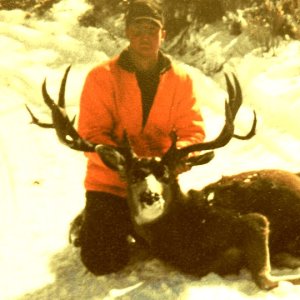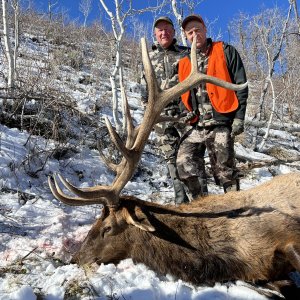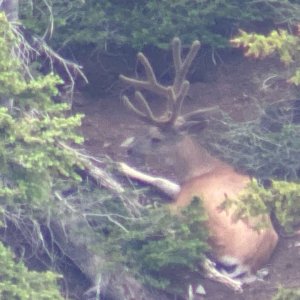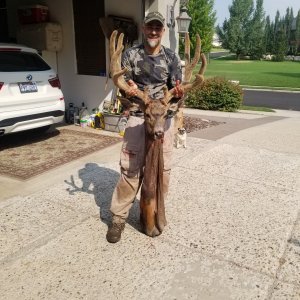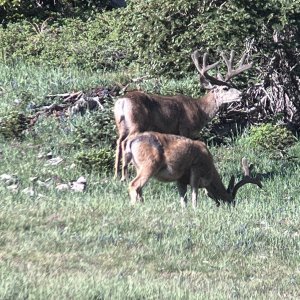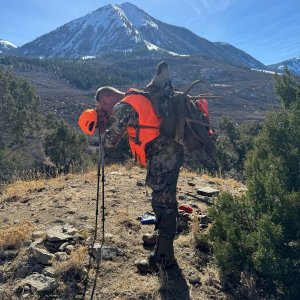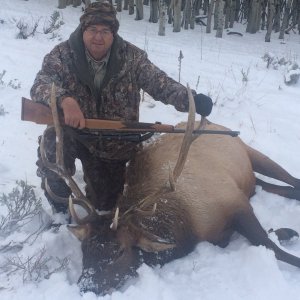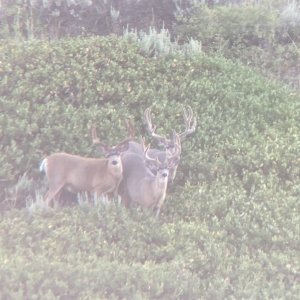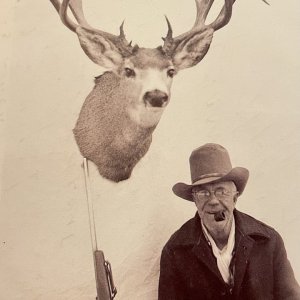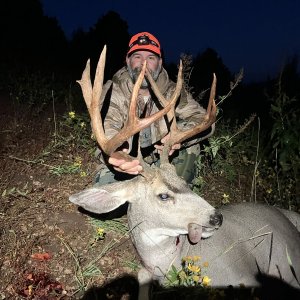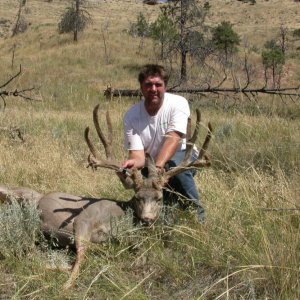T
TFinalshot
Guest
Thoughts? Good idea, bad, wont know till we try? From MDF:
November 11, 2011
Mule Deer Foundation Supports US-89 Paunsaugunt Deer Crossing Project
SALT LAKE CITY, Utah ? In early November the Mule Deer Foundation
(MDF) took decisive steps to protect wildlife, while working across state lines and collaborating with state agencies and other groups.
MDF has ranked the US-89 Paunsaugunt Deer Crossing Project as a top priority for receiving funds from the Arizona Special Big Game License Program for Mule Deer. MDF has committed funds from this Program ? $25,000 per year, for the next four years ? to help pay for materials and installation of fencing and wildlife crossings on US-89 between the Arizona border to Kanab, Utah.
The Paunsaugunt deer herd, one of the premier mule deer herds in the Southwest, summers in Utah and winters in northern Arizona on the renowned Arizona Strip deer herd unit. The herd must cross US-89 twice each year during the spring and fall migration, and a significant number of deer are killed by vehicle collisions. Good solutions for the long stretch of highway seemed impractical. However, a recent review of accident data showed that onstructing fencing along an 11.5 mile section would be a major help to reducing accidents.
The goal of the US-89 Paunsaugunt Deer Crossing Project is to provide safe passage for mule deer and improve safety for motorists and wildlife on Highway 89. The plan is to fence the highest accident area, between MP 36.8 to 48.2. The ends of the fencing will tie into existing large bridges at each end, where animals can cross under the highway. Because of the limited distance deer are willing to travel to look for crossing opportunities, four wildlife passages will also be constructed.
MDF President and CEO Miles Moretti commented, ?What's unusual, and also special, about this project is that MDF volunteers and Utah dedicated hunters will help build escape ramps for deer that might still end up on the highway. These efforts will help save more deer, as well as $150,000 in construction costs.?
MDF is partnering on this $2.4 million endeavor with state agencies and other conservation groups. The Utah Dept. of Transportation has allotted Enhancement Funding dollars from both federal and state funds. Additional monies include up to $50,000 from Utah?s Conservation Permit Program and $15,000 per year for the first two years through the Arizona Game and Fish Department's Big Game Donation funds.
Ground work should begin on the US-89 Paunsaugunt Deer Crossing
Project next year.
Contact: Marty Holmes
Tel.: 719-221-0732
E-mail: [email protected]
www.tonybynum.com
"Roadless areas, in general, represent some of the best fish and wildlife habitat on public lands. The bad news is that there is nothing positive about a road where fish and wildlife habitat are concerned -- absolutely nothing." (B&C Professor, Jack Ward Thomas, Fair Chase, Fall 2005, p.10).
November 11, 2011
Mule Deer Foundation Supports US-89 Paunsaugunt Deer Crossing Project
SALT LAKE CITY, Utah ? In early November the Mule Deer Foundation
(MDF) took decisive steps to protect wildlife, while working across state lines and collaborating with state agencies and other groups.
MDF has ranked the US-89 Paunsaugunt Deer Crossing Project as a top priority for receiving funds from the Arizona Special Big Game License Program for Mule Deer. MDF has committed funds from this Program ? $25,000 per year, for the next four years ? to help pay for materials and installation of fencing and wildlife crossings on US-89 between the Arizona border to Kanab, Utah.
The Paunsaugunt deer herd, one of the premier mule deer herds in the Southwest, summers in Utah and winters in northern Arizona on the renowned Arizona Strip deer herd unit. The herd must cross US-89 twice each year during the spring and fall migration, and a significant number of deer are killed by vehicle collisions. Good solutions for the long stretch of highway seemed impractical. However, a recent review of accident data showed that onstructing fencing along an 11.5 mile section would be a major help to reducing accidents.
The goal of the US-89 Paunsaugunt Deer Crossing Project is to provide safe passage for mule deer and improve safety for motorists and wildlife on Highway 89. The plan is to fence the highest accident area, between MP 36.8 to 48.2. The ends of the fencing will tie into existing large bridges at each end, where animals can cross under the highway. Because of the limited distance deer are willing to travel to look for crossing opportunities, four wildlife passages will also be constructed.
MDF President and CEO Miles Moretti commented, ?What's unusual, and also special, about this project is that MDF volunteers and Utah dedicated hunters will help build escape ramps for deer that might still end up on the highway. These efforts will help save more deer, as well as $150,000 in construction costs.?
MDF is partnering on this $2.4 million endeavor with state agencies and other conservation groups. The Utah Dept. of Transportation has allotted Enhancement Funding dollars from both federal and state funds. Additional monies include up to $50,000 from Utah?s Conservation Permit Program and $15,000 per year for the first two years through the Arizona Game and Fish Department's Big Game Donation funds.
Ground work should begin on the US-89 Paunsaugunt Deer Crossing
Project next year.
Contact: Marty Holmes
Tel.: 719-221-0732
E-mail: [email protected]
www.tonybynum.com
"Roadless areas, in general, represent some of the best fish and wildlife habitat on public lands. The bad news is that there is nothing positive about a road where fish and wildlife habitat are concerned -- absolutely nothing." (B&C Professor, Jack Ward Thomas, Fair Chase, Fall 2005, p.10).

